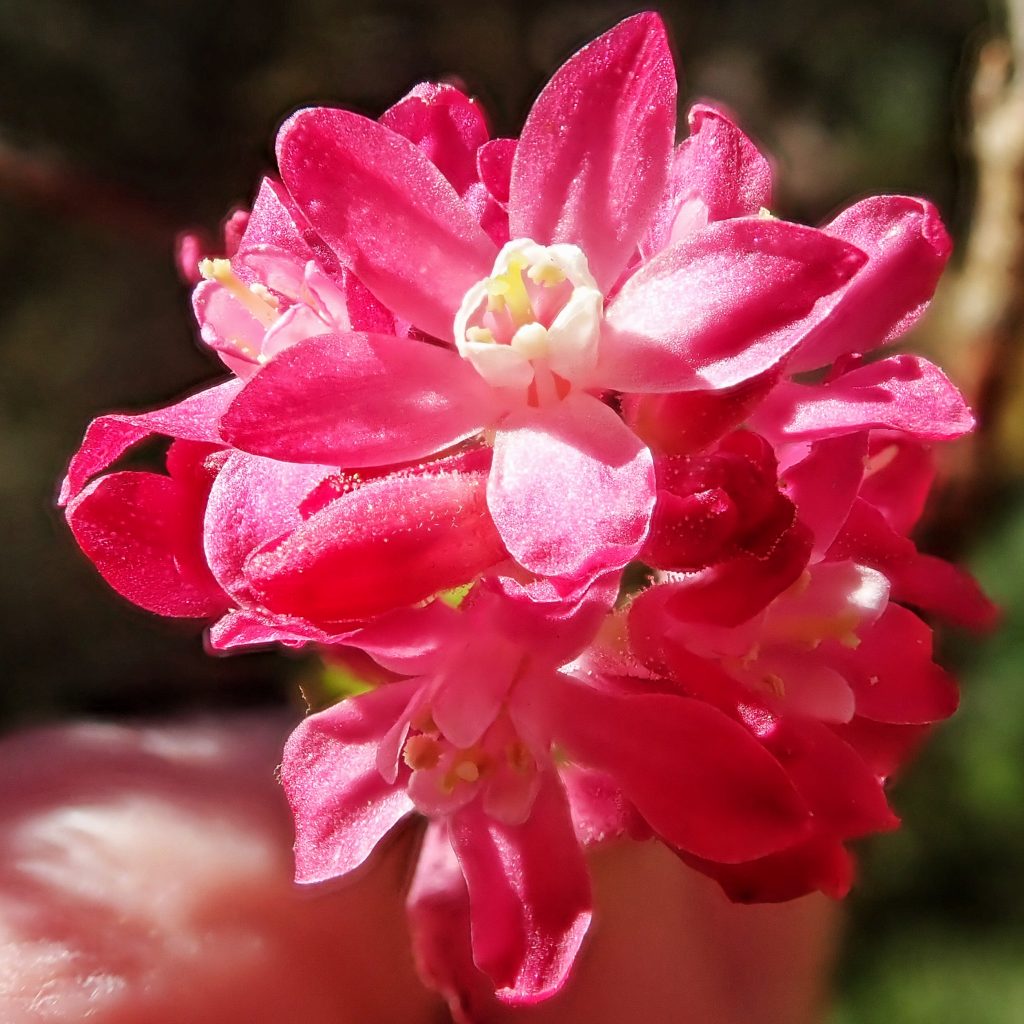
It is ironic that it took so long to add this species to my list, considering that I see it dozens of times a day. But Ribes sanguineum is a very popular restoration planting for Vancouver/Clark County parks and rec and I could never be certain that any of the ones I see regularly were wild. And it is further complicated by the fact that red flowers just don’t ‘pop’ for me the way they do for most folks.
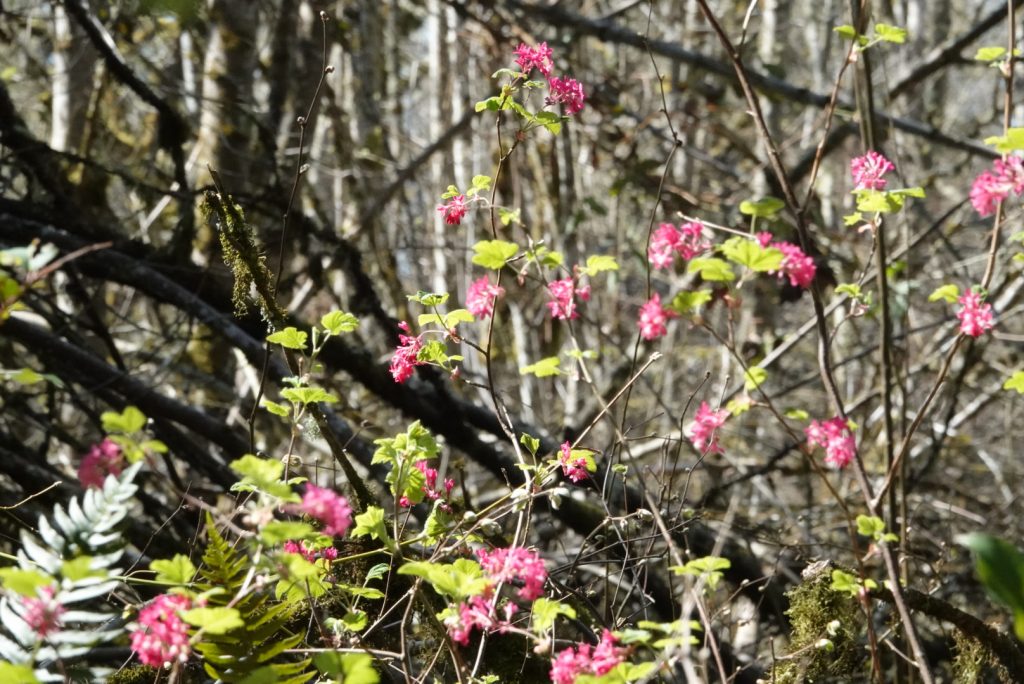
Pam spotted one for me a couple weeks ago, but we were traveling at highway speeds and there wasn’t a pulloff. But last Friday, in the backwoods of Canemah Bluff outside of Oregon City, Morgan spotted not one but two genuine wild red-flowering currants. And I was thrilled, both because I could add it to the site, and because, once I can see them and separate them from their background, I find them to be a spectacular little gem of a flower.
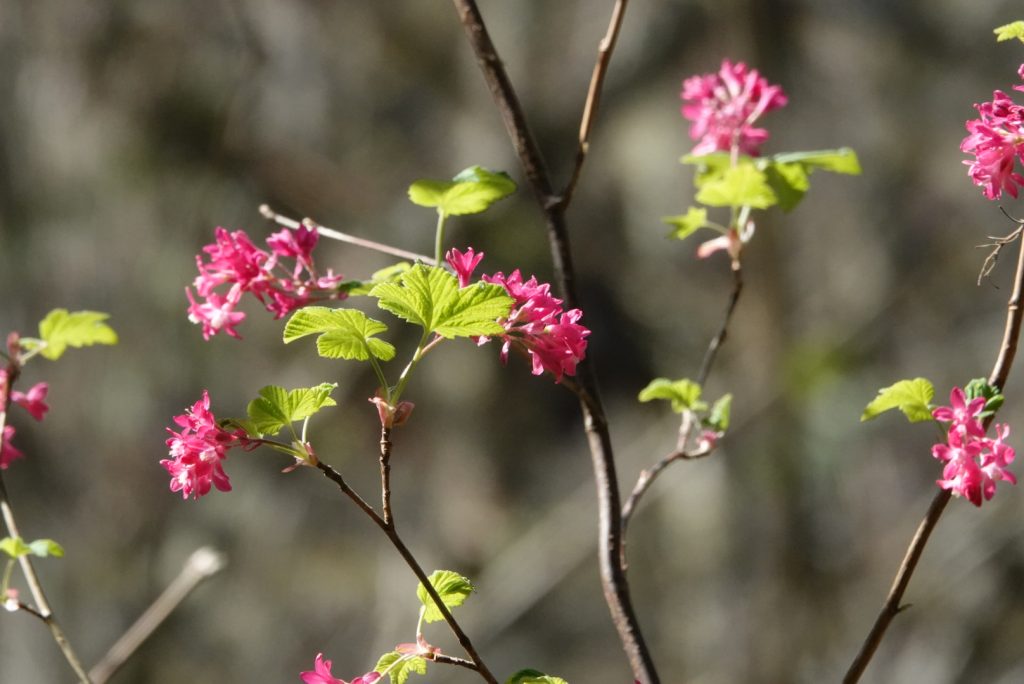
Speaking of the flowers, not all is as it may appear as regards their structure. The blood-red portion just above the pedicel is actually a bract, and the flaring, deep pink portions are sepals father than petals. Below the sepals is a standard floral structure (bracts and sepals are also standard floral structures , but they are usually green) called the hypanthium, which houses the ovary, and is pinkish. The actual petals form something of a cup in the center of the flower and are white to light pink.
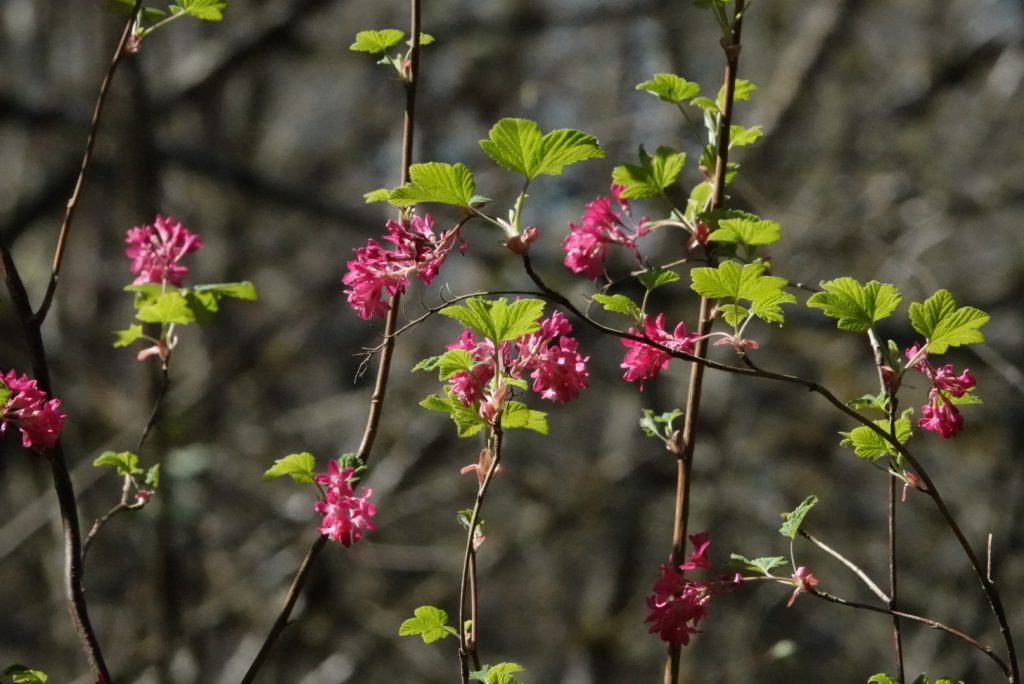
The fruits of this plant are edible, and were widely eaten by indigenous peoples, but they are rather tasteless and were consumed for food value and moisture rather than gastronomic pleasure. But since wildlife don’t eat for pleasure they are a popular food source for woodland creatures. Oddly, no one seems to have found medicinal purposes for any of the parts of this plant, although the sight of the flowers is certainly a balm for the spirit.
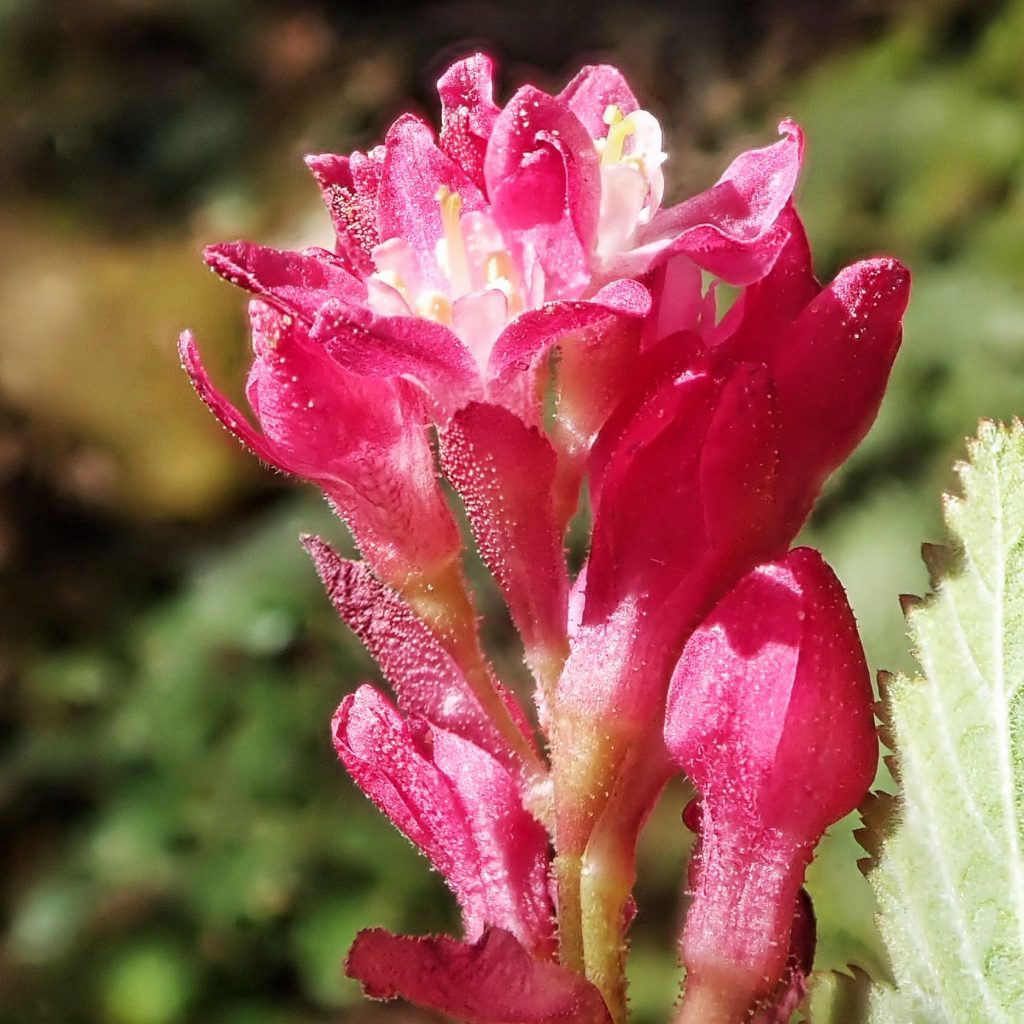
Description-Medium to large shrub (up to 9’ tall), with pink to red flowers and no thorns; leaves wrinkled, round to heart shaped, lobed and almost shaped like a maple leaf, toothed on margins, smooth on top and hairy below; the flowers are tubes with red bracts, pink sepals and hypanthium, and white corolla; fruits are blue black, globose, smooth, 3-9mm.
Similar species– Other Ribes spp. either have prickles on the stems and branches, have green bracts and sepals, have different colored flowers, or have the sepals extremely reflexed so the petals are extruded and the flower looks ‘inside out’.
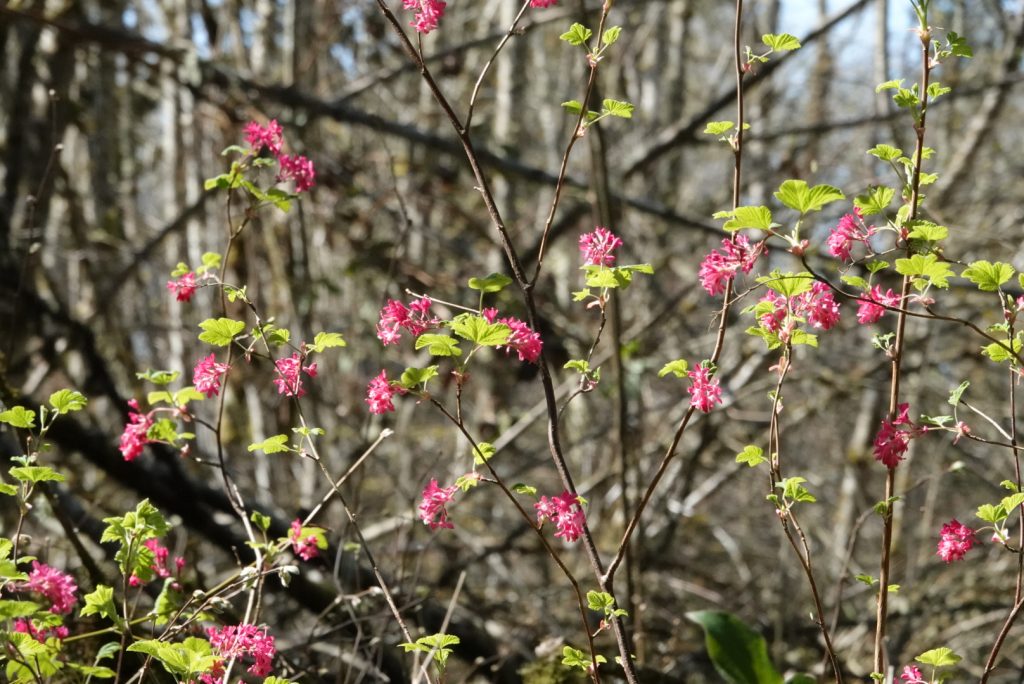
Habitat– Moist to mesic forests and forest openings up to 7,000’.
Range– Native to temperate nw North America; in our region it is found primarily west of the Cascades and in nw California, with disjunct populations in n Idaho, and the upper Snake River.
Reproductive timing– Blooms February to May; fruits ripen August-September
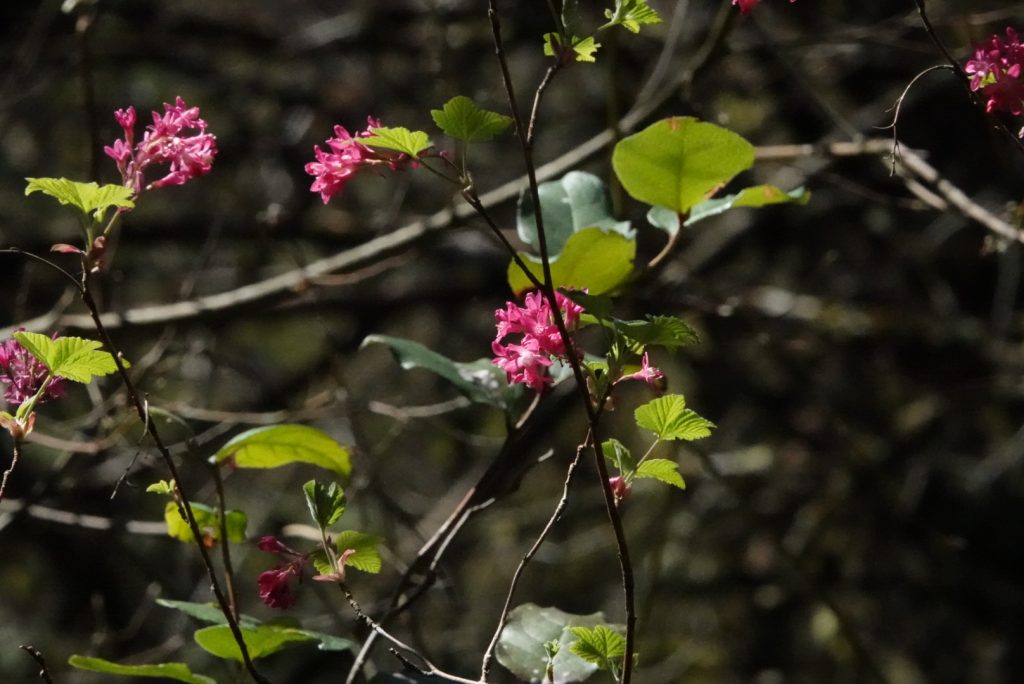
Eaten by-Hummingbirds love this native plant, and are frequent visitors to its early spring flowers, as are almost every early season nectar and pollen seeking insect; it is utilized as a larval host by many butterflies in the family Nymphalidae (brush footed butterflies), particularly in the genus Polygonia, and the geometrid moths Campaea perlata, Dysstroma brunneata, and D. formosa, amongst many others, as well as far too many micromoths to begin to list, many in the families Yponomeutidae and Gracillariidae; the stink bugs Chlorochroa ligata and Cosmopepla lintneriana are fond of the fruit, as are Robins, Cedar Waxwings, raccoons, squirrels, and almost every other fruit or seed eating bird and mammal.
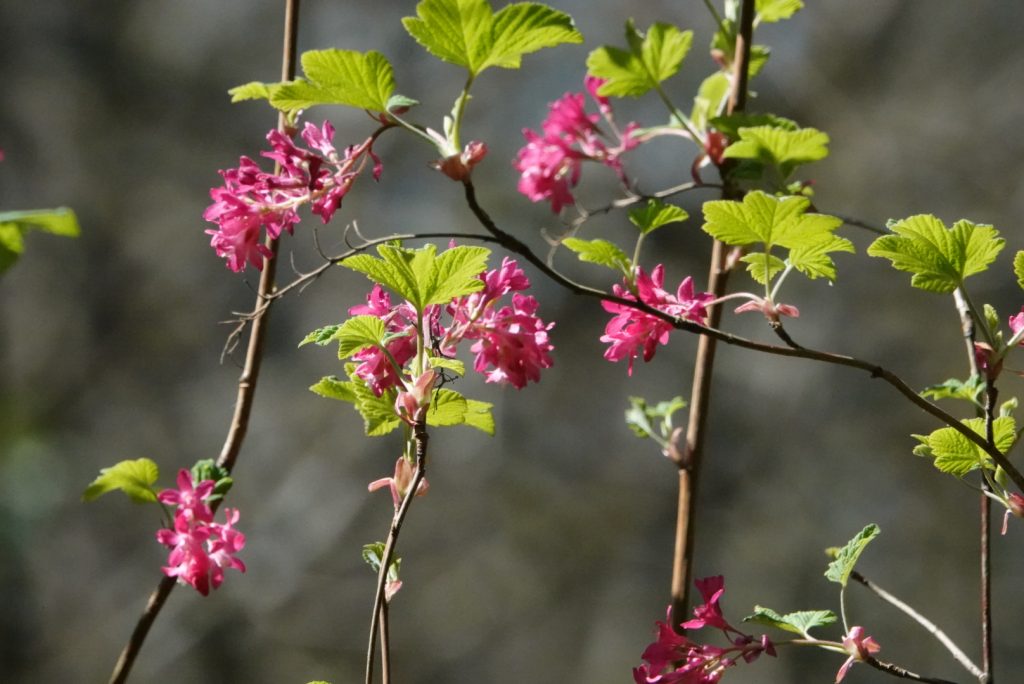
Etymology of names–Ribes is from the Arabic for ‘berry with an acid flavor’, a good description of most of the gooseberry/currants (Grossulariaceae)Grossulariaceae. The specific epithet sanguineum is from the Latin for ‘blood red’ and references the color of the bracts of the flowers.
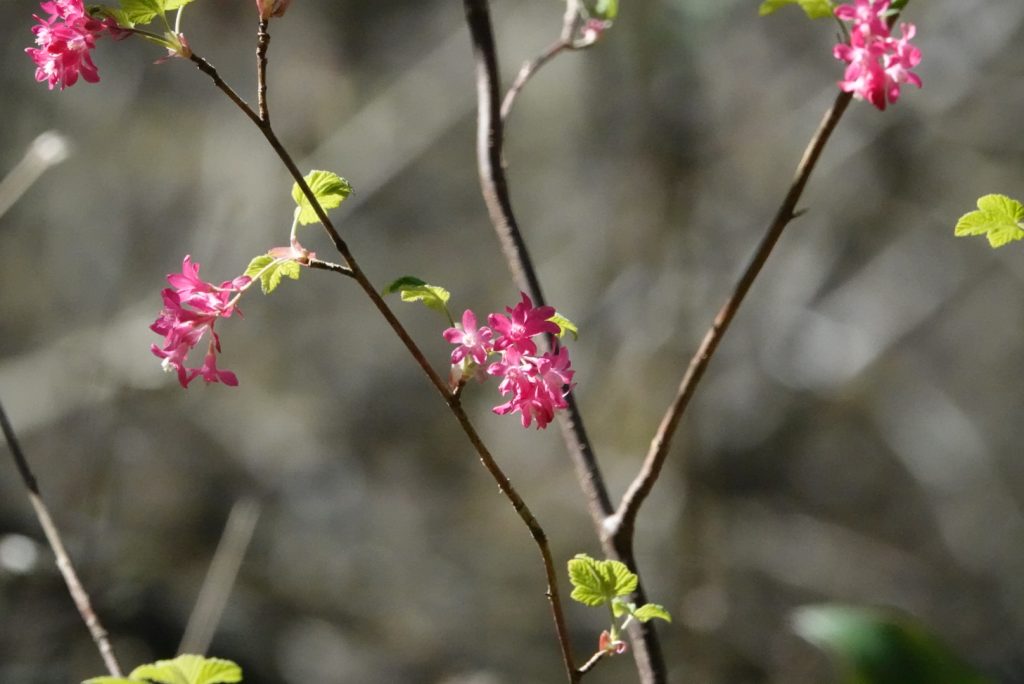
http://www.efloras.org/florataxon.aspx?flora_id=1&taxon_id=250065814
https://linnet.geog.ubc.ca/Atlas/Atlas.aspx?sciname=Ribes%20sanguineum
https://www.fs.fed.us/wildflowers/plant-of-the-week/ribes_sanguineum.shtml
http://biology.burke.washington.edu/herbarium/imagecollection/taxon.php?Taxon=Ribes%20sanguineum
https://www.backyardnature.net/n/w/currant.htm
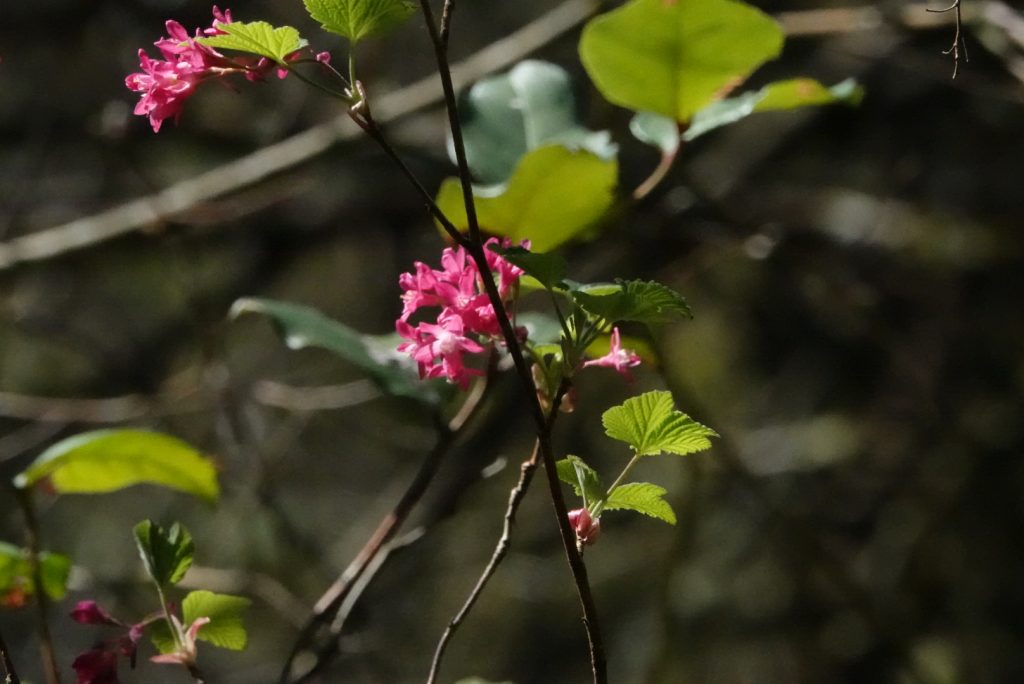
People do (or should I say did) make red currant jelly! I’d rather leave them for the birds and other wildlife.
Must’ve used a lot of sugar!
These are not the same as red currants – those are ribes rubrum, red flowering currants described here are actually ribes sanguineum. The red flowering currant bush’s berries are actually dark blue and taste awful.
Well, another of the many reasons I don’t like common names. Red-flowering currant is what my book called them. And I did say they were Ribes sanguineum 😀
Sorry, I didn’t read your comment well and thought we were talking nomenclature. I didn’t say these were, or were called red currants. I describe the fruit as blue to black. And as far as edibility, I went by the multiple entries in the Native American Ethnobotany Database.